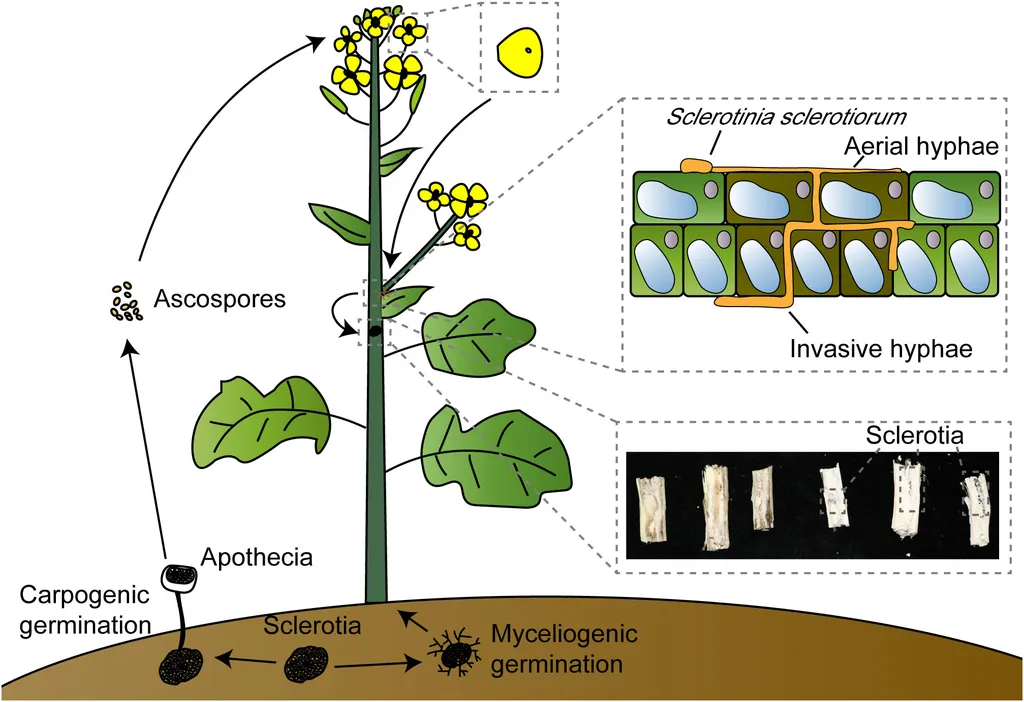In a significant breakthrough for crop biotechnology, researchers have developed a highly efficient protoplast regeneration and transfection protocol for Brassica carinata, an important oil crop with vast potential for food and industrial production. This advancement, published in *Frontiers in Plant Science* (translated to English as “Frontiers in Plant Science”), paves the way for more efficient genome editing using CRISPR/Cas9 technology, which could revolutionize the breeding and improvement of this valuable crop.
Brassica carinata, also known as Ethiopian mustard, is gaining attention for its high oil content and adaptability to harsh growing conditions. However, the lack of efficient DNA-free gene editing methods has hindered its genetic improvement. The new protocol, developed by a team led by Xueyuan Li at the Department of Plant Breeding, Swedish University of Agricultural Sciences, addresses this challenge by optimizing several critical factors influencing in vitro shoot regeneration.
The team investigated the impact of genotype, sugar type, plant growth regulators (PGRs), and culture duration on different media throughout various stages of protoplast development. Their findings revealed that high concentrations of NAA and 2,4-D were crucial for cell wall formation, while a lower auxin concentration relative to cytokinin was necessary for active cell division. For callus growth and shoot induction, a high cytokinin-to-auxin ratio was essential, and an even higher ratio was optimal for shoot regeneration. For shoot elongation, low levels of BAP and GA3 were sufficient.
“This optimized protocol allows us to achieve an average regeneration frequency of up to 64% and a transfection efficiency of 40% using the GFP marker gene,” said Li. “This is a significant improvement over previous methods and opens up new possibilities for the genetic improvement of Brassica carinata.”
The implications of this research are far-reaching, particularly for the energy sector. Brassica carinata is not only a valuable source of food but also a potential feedstock for biofuels and industrial applications. Efficient genome editing can accelerate the development of high-yielding, disease-resistant, and stress-tolerant varieties, making the crop more viable for large-scale production.
“This breakthrough is a game-changer for the agricultural and energy sectors,” said a spokesperson for an industry group focused on sustainable energy. “By enhancing our ability to edit the genome of Brassica carinata, we can develop crops that are more resilient and productive, ultimately contributing to a more sustainable and secure food and energy future.”
The research team is now employing this efficient protoplast regeneration protocol for genome editing in their lab. The protocol is expected to significantly enhance the application of the CRISPR system in both basic research and the genetic improvement of Brassica carinata over the long term.
As the world seeks sustainable solutions to meet growing energy demands, advancements in crop biotechnology like this one are crucial. By improving the efficiency of genome editing in Brassica carinata, researchers are not only enhancing the crop’s potential for food production but also paving the way for its use in biofuel production and other industrial applications. This research highlights the importance of continued investment in agricultural biotechnology to drive innovation and sustainability in the energy sector.

